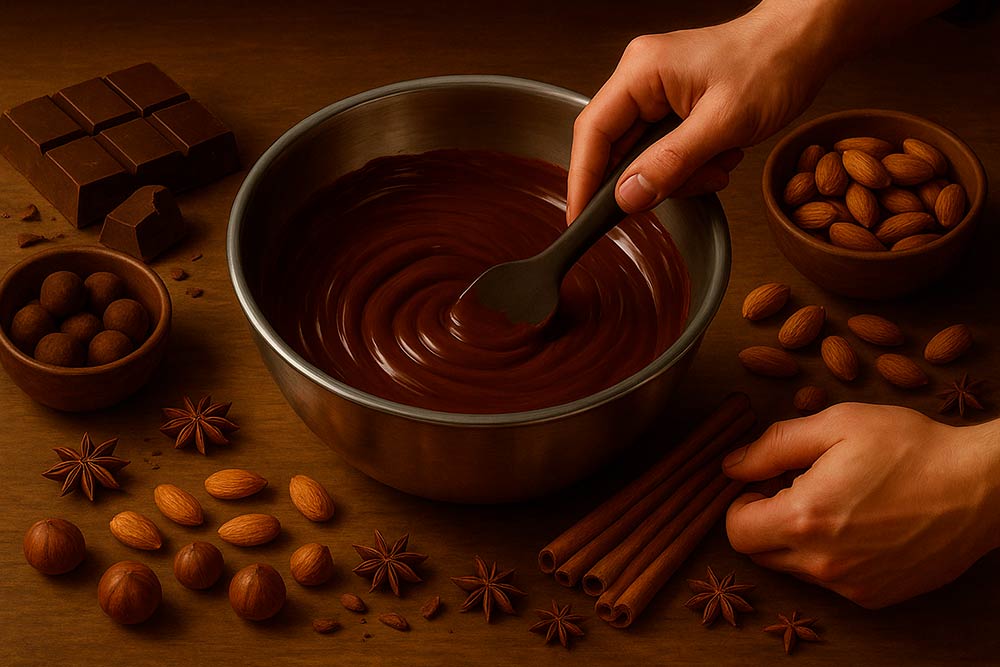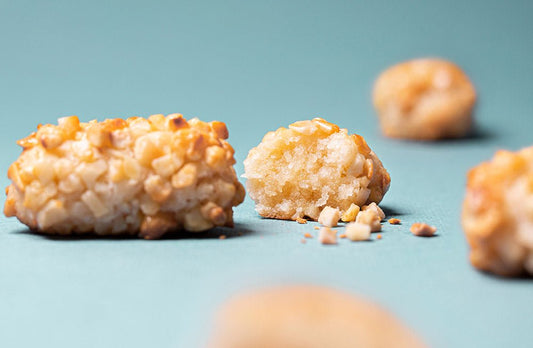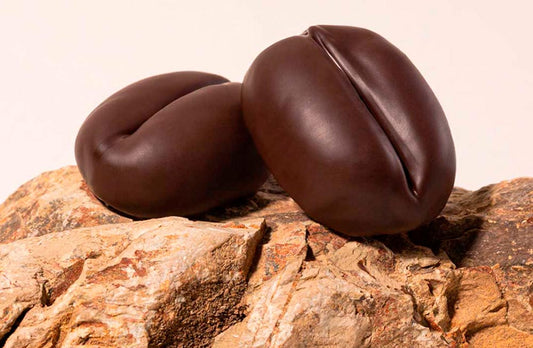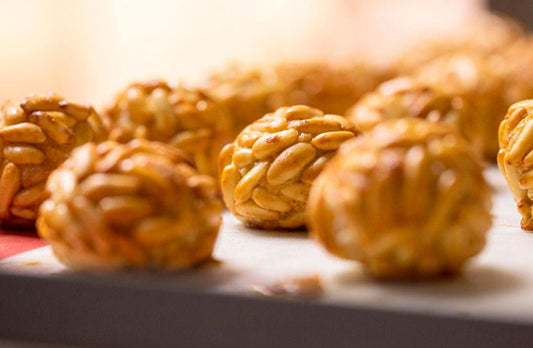How to mix chocolate?
Cristina MolinerMelting, tempering, blending... chocolate is also an art. Whether you're making homemade pralines, a silky ganache, or a glossy coating, blending chocolate correctly is key to achieving smooth textures, balanced flavors, and a result worthy of a professional chocolatier. In this article, we explore essential techniques, recommended ingredients, and practical tips for mastering the art of chocolate blending, without forgetting one important detail: the number of calories in a chocolate and the calorie content of the chocolate we use.
Basic techniques for mixing chocolate like a pro
Bain-marie melting: the first step towards a perfect mix
The safest way to melt chocolate is in a double boiler. This technique prevents it from burning or drying out, preserving its aroma and texture. All you need is a pot of hot (not boiling) water and a heat-resistant bowl:
- Chop the chocolate and place it in the bowl.
- Make sure the bottom of the bowl does not touch the water.
- Stir gently with a silicone spatula until completely melted.
This method is ideal for preparing artisanal chocolates, ganaches or coatings.
Tempered: shine, texture and elegance
Tempering is a technique that stabilizes cocoa butter crystals to achieve a glossy finish, a crunchy texture, and prevent the chocolate from melting easily when touched. It's essential when working with quality chocolate bars.
Basic tempering process:
- Melt 2/3 of the chocolate at 45-50 °C.
- Remove from heat and add the remaining 1/3, stirring until it drops to 27-28°C.
- Reheat gently to 31-32°C (dark chocolate) or 29-30°C (milk or white).
This process may seem technical, but it is the key to achieving flawless chocolates.
Ingredients that elevate your chocolate mix
Nuts, spices and salts: gourmet combinations
The chocolate blend is enriched with ingredients that provide texture, aroma, and contrast. Here are some irresistible combinations:
- Dark chocolate + sea salt + toasted almonds
- Milk chocolate + nutmeg + hazelnuts
- White chocolate + cardamom + pistachios
- Chocolate infused with chai or lavender tea
These combinations can be applied to both bars and sugar-free chocolates, offering sophisticated and balanced creations.
Liqueurs and cream: the basis of a perfect ganache
A classic ganache is made by mixing melted chocolate and hot cream in equal proportions. You can add liqueurs (rum, Grand Marnier, coffee liqueur) for a more adult and aromatic touch.
Gourmet tip: Infuse the cream with orange peel, cinnamon, or herbs before mixing it with the chocolate. You'll get a ganache with character and depth.
How to make homemade chocolates with chocolate bars
Choose the right tablet
To achieve quality homemade chocolates, start with a good base. Classic chocolate bars offer intense flavors and textures ideal for melting and molding. If you're looking for healthy or specialty options, you can opt for sugar-free or vegan chocolates.
Steps to make homemade chocolates
- Melts and tempers the chocolate.
- Pour into chocolate molds, covering the sides.
- Fill with ganache, nuts or infused fillings.
- Cover with more chocolate and chill until solidified.
It's a delicious and creative way to share chocolate at home.
How many calories does a chocolate have?
Calories per chocolate: what you should know
The calorie content of a chocolate depends on its ingredients: the type of chocolate, the filling, and whether or not it contains added sugar. On average, the kcal content of a chocolate ranges from:
- 40-70 kcal per unit for plain dark chocolate pralines
- Up to 100 kcal per unit if they have creamy fillings or nuts
- 30-50 kcal in sugar-free chocolates
Thus, the calories per unit of chocolates can vary widely. If you're looking to control your energy intake, opt for sugar-free versions or those made with dark chocolate with a high cocoa percentage.
Quick comparison of chocolates according to their content
|
Type of chocolate |
Average calories (per unit) |
|---|---|
|
70% dark chocolate |
60 kcal |
|
With ganache filling |
85 kcal |
|
With nuts |
95 kcal |
|
Sugar-free (sweetened with maltitol or stevia) |
40 kcal |
Recommendations for a perfect pairing
Classic and daring combinations
A good pairing enhances the flavors of chocolate. Here are some combinations suggested by chefs and chocolatiers:
- Dark chocolate with red wine, espresso or smoked whiskey
- Milk chocolate with aged rum, port or black tea
- White chocolate with sparkling wine, orange liqueur or jasmine infusion
You can also pair it with solid ingredients: cured cheese, dried fruit, or even salted truffles.
Conclusion: Mixing chocolate is an art you can master.
Blending chocolate isn't exclusive to professional bakers. With the right techniques (melting, tempering, infusing) and the right selection of gourmet ingredients, you can transform any bar into a masterpiece. Whether you're making homemade pralines, a ganache filling, or a glossy coating, always remember that the details make the difference. And if you're looking for inspiration or ready-to-enjoy products, visit our collection of artisanal chocolates.
Frequently Asked Questions
What type of chocolate is best for mixing?
It depends on the result you're looking for. Dark chocolate (minimum 70%) is ideal for ganaches and intense chocolates. Milk chocolate provides smoothness and sweetness, while white chocolate lends itself to aromatic or colorful blends. Use couverture chocolate or quality bars for best results.
Can I mix chocolate directly in the microwave?
Yes, but be careful. Use medium heat and heat in 15-20 second intervals, stirring between each interval. Avoid overheating, as the chocolate can burn easily. This method is practical for small batches, but a double boiler offers greater control.
How do I prevent chocolate from hardening too quickly?
Proper tempering is key. If the chocolate suddenly hardens, it has probably lost heat or been exposed to moisture. Maintain the proper temperature and work in a dry environment. You can also temper the chocolate over a bowl of hot water.
Are there low-calorie chocolates?
Yes. Sugar-free chocolates sweetened with sweeteners like stevia or maltitol offer delicious, lower-calorie alternatives. You can also choose chocolates with lighter fillings, such as fruit or nuts in small amounts.









